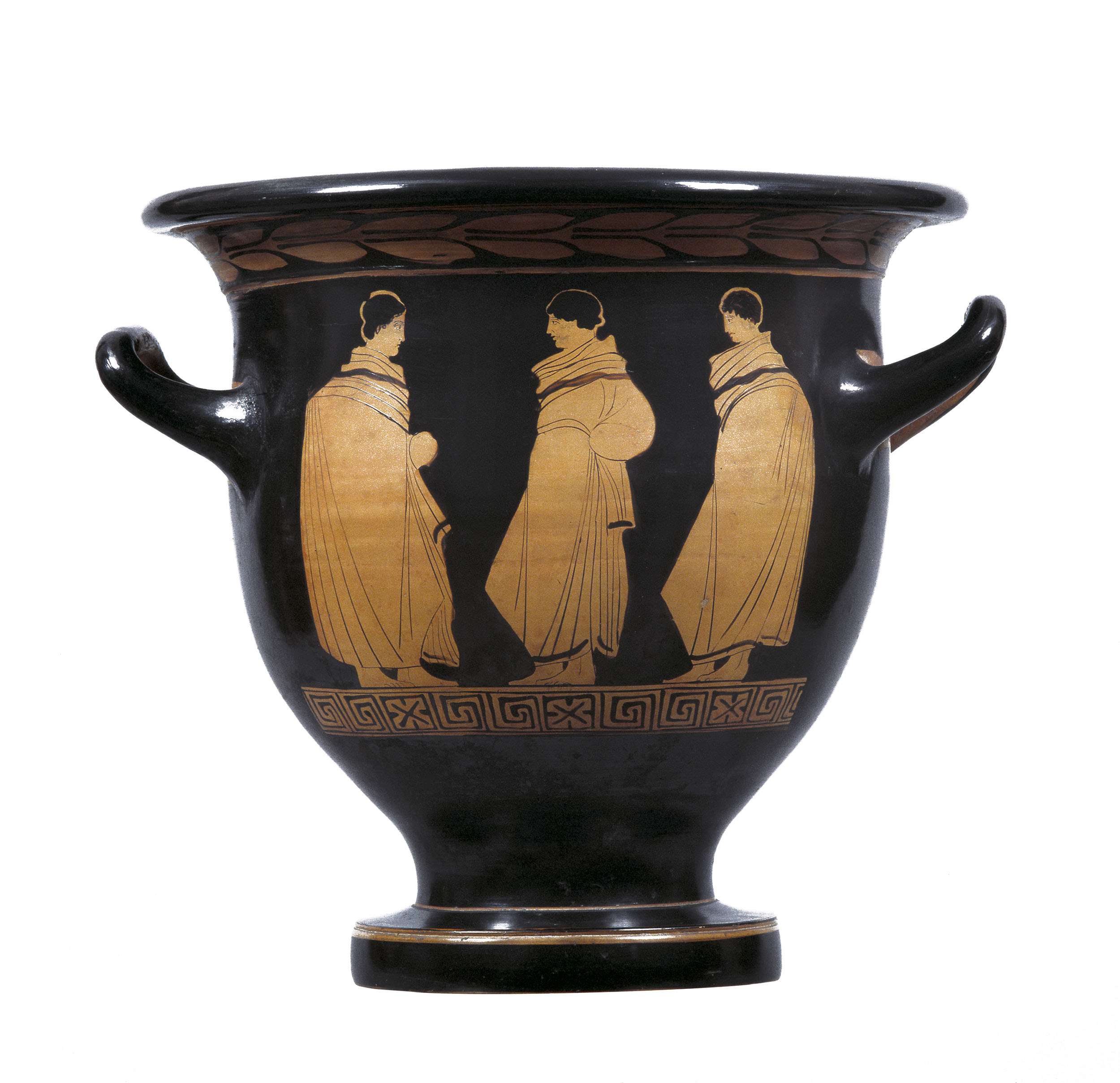



On the main side of the vase (A) Herakles is shown. He is depicted nude, as a beardless youth, turned topward the right in a three-quarter pose. His left hand rests on his club, his right at his waist. His hair is bound by a fillet and across his chest is his telamon. Before him, in the centre of the scene, a winged Nike prepares to crown him. She is depicted wearing a long chiton and an himation hanging from her left shoulder and gathered over her raised left arm. She wears a necklace and on her right arm a bracelet (psellia). Her earrings are rendered with applied white. Her hair, which is gathered high in a krobylos, is bound with a fillet. Behind the Nike stands a young man holding a wreath (stephane) in both hands. He wears a short chlamys, held at his chest by a brooch. Around his hair is a fillet and a petasos hangs at the nape of his neck. A little square column stands between Herakles and Nike. The scene is based on a band of left-turning maeanders interrupted by squares with a St. Andrew cross. Below the rim is a band of laurel leaves. Represented on the back of the vase (B) are three himation-clad youths.
Scenes of Nike crowning Herakles are fairly frequent in the iconography of the 5th and 4th centuries B.C., either as the main theme or as a supplementary moment in the scene. In the ceramic production of South Italy, the origin of the vase, the subject was used chiefly as a main theme. The similarities to contemporary Attic pottery seen in the vases of South Italy are due either to the influence of Athenian vase painters, who probably emigrated at that time to Magna Graeca, or to the Greeks of South Italy having studied in Attic workshops. This particular crater is a product of the Lucanian workshop that flourished particularly between 440 and 370 B.C., with its main centres at Metapontum and Herakleia. The Kreousa Painter is considered among the most representative of the Workshop. The vase is one of the most impressive of the Museum collection because of its excellent preservation and its exceptional decoration. It is a splendid example of South Italian ceramic production.
It is attributed to the Kreousa Painter.
PUBLICATION
Zarkadas Α. 2006. Cat. no. 91, in Choremi-Spetsieri Α. – Zarkadas Α. (eds), The Paul and Alexandra Canellopoulos Museum. Ancient Art, Athens, 150-151.